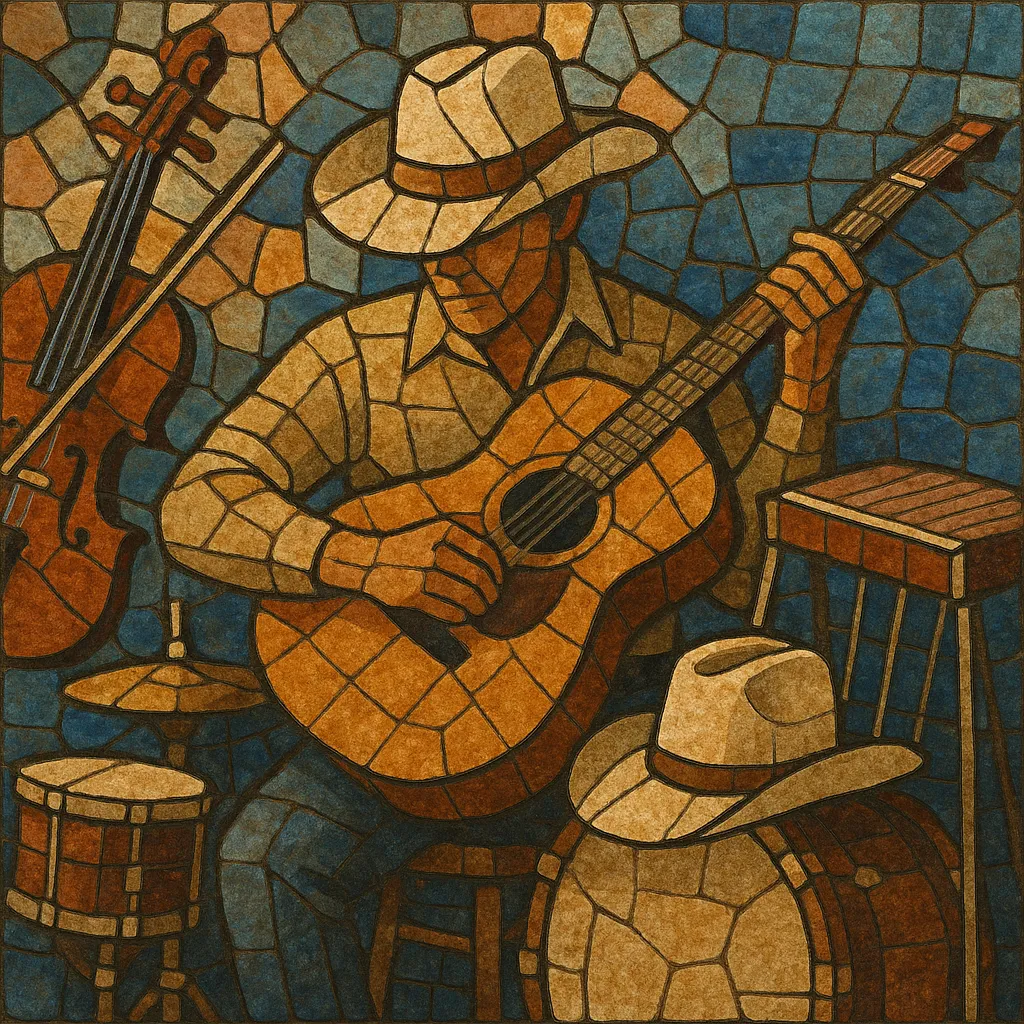
Neo-traditional country is a back-to-basics movement in country music that emerged in the 1980s as a reaction against the lush, pop-oriented "countrypolitan" and crossover trends of the prior decades.
It emphasizes core country instrumentation—fiddle, pedal steel, acoustic guitar, Telecaster-style electric guitar, upright or electric bass, and unfussy drums—alongside plain-spoken vocals, storytelling lyrics, and danceable shuffles and two-steps. The sound draws directly from honky-tonk, Bakersfield, western swing, bluegrass, and classic Nashville traditions, while benefiting from modern studio clarity without sacrificing rootsy authenticity.
By the early 1980s, mainstream country was dominated by countrypolitan textures and pop crossovers. A new generation of artists, steeped in honky-tonk, Bakersfield, western swing, and bluegrass, pushed back by re-centering traditional sounds. Their goal wasn’t museum-piece revivalism but a living, radio-ready update of core country values.
Artists such as George Strait and Ricky Skaggs led the charge, returning fiddles, pedal steel, and the two-step groove to prominence. Randy Travis’s success mid-decade proved that lean arrangements and earnest storytelling could thrive on contemporary charts. Radio programmers and dance halls embraced the style, helping it spread nationwide.
The movement matured into a dominant mainstream force through the early 1990s with Alan Jackson, Clint Black, Patty Loveless, and others. Dwight Yoakam fused Bakersfield grit with modern swagger, while The Judds and Keith Whitley brought harmony-rich and emotionally resonant approaches. The sound coexisted with pop-leaning country but remained a reliable commercial and cultural pillar.
While country radio cycles have shifted toward pop-country and bro-country at times, neo-traditional country remains a perennial reference point. Texas country and Red Dirt scenes sustained its aesthetics regionally, and periodic mainstream revivals reaffirm the enduring appeal of fiddle-and-steel timbres, sturdy songcraft, and heartland narratives.
Use acoustic rhythm guitar, Telecaster-style electric for clean leads, pedal steel guitar, fiddle, bass (upright or electric), and a straightforward drum kit. Keep keyboards subtle (e.g., piano for ballads) and avoid glossy synth layers.
Lean on shuffles, train beats, and two-step-friendly tempos (roughly 90–140 BPM). Backbeats should be crisp but never overpower the vocal. Let the bass walk or outline roots and fifths, anchoring a strong dance pulse.
Favor diatonic, singable progressions (I–IV–V, I–vi–IV–V) with tasteful secondary dominants and classic turnarounds. Melodies should be memorable and sit comfortably in a conversational range, allowing expressive twang and ornamentation.
Use concise verse–chorus structures with occasional bridges or key-lift finales. Spotlight instrumental fills between vocal lines (fiddle and steel “answering” the singer). Keep arrangements lean so storytelling and vocal phrasing remain central.
Write narrative, detail-rich stories about love, loss, small-town life, work, faith, and the dance hall. Maintain plainspoken authenticity and emotional directness; metaphors should feel grounded and relatable.
Aim for clarity and warmth, minimal processing, and natural room ambience. Double acoustic guitars for body, pan fiddle and steel for width, and preserve dynamic headroom. Live, prioritize tight band interplay and strong harmony vocals.

